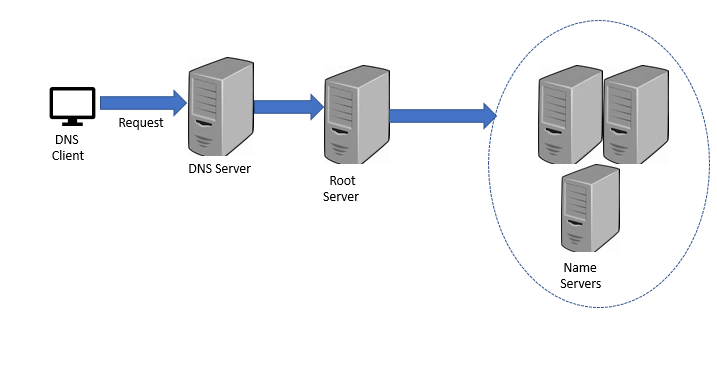A DNS works using the concept of distributed databases based on the client-server model. DNS clients are entities that require a name resolution (mapping of host names to IP addresses). DNS servers maintain the data that is required for name resolution. The high-level schematic of a DNS client-server architecture is given in the following diagram:

Suppose the URL www.xyzworks.com is typed into the browser of the DNS client. The browser gets connected to a DNS server to get the equivalent IP address. The DNS server performs this task by first connecting to one of the root DNS servers. The root servers will store the IP addresses of all DNS servers that handle top-level domains such as .edu, .com, and so on. In this example, the root server after getting the IP address of the top-level domain .com, sends it a query asking for the IP address of www.xyzworks.com. The DNS server that handles the .com domain will respond with the IP addresses of the name servers that handle the www.xyzworks.com domain.
The name server then sends the query to the www.xyzworks.com DNS server. This DNS server responds with the entire IP address to the name server, which in turn sends it back to the DNS client which had initiated the DNS request. The DNS client machine can then use the IP address to access the required web page.
The salient aspects of this client-server architecture are as follows:
- Redundancy: There are multiple DNS servers at each level so that even if one fails, the other server can take its role.
- Caching: Once a DNS request is resolved, the DNS server caches the IP address received by it. For example, where the IP address of the .com domain server is cached by the DNS server so that any subsequent requests for a .com domain can be handled by it without initiating repetitive DNS query mechanisms.
